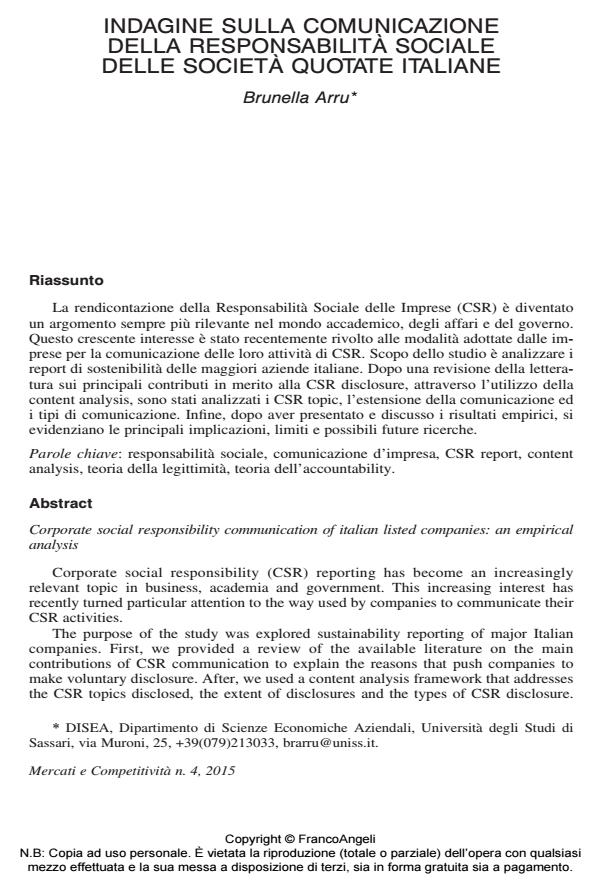Indagine sulla comunicazione della responsabilità sociale delle società quotate italiane
Titolo Rivista MERCATI E COMPETITIVITÀ
Autori/Curatori Brunella Arru
Anno di pubblicazione 2015 Fascicolo 2015/4
Lingua Italiano Numero pagine 32 P. 15-46 Dimensione file 154 KB
DOI 10.3280/MC2015-004002
Il DOI è il codice a barre della proprietà intellettuale: per saperne di più
clicca qui
Qui sotto puoi vedere in anteprima la prima pagina di questo articolo.
Se questo articolo ti interessa, lo puoi acquistare (e scaricare in formato pdf) seguendo le facili indicazioni per acquistare il download credit. Acquista Download Credits per scaricare questo Articolo in formato PDF

FrancoAngeli è membro della Publishers International Linking Association, Inc (PILA)associazione indipendente e non profit per facilitare (attraverso i servizi tecnologici implementati da CrossRef.org) l’accesso degli studiosi ai contenuti digitali nelle pubblicazioni professionali e scientifiche
La rendicontazione della Responsabilità Sociale delle Imprese (CSR) è diventato un argomento sempre più rilevante nel mondo accademico, degli affari e del governo. Questo crescente interesse è stato recentemente rivolto alle modalità adottate dalle imprese per la comunicazione delle loro attività di CSR. Scopo dello studio è analizzare i report di sostenibilità delle maggiori aziende italiane. Dopo una revisione della letteratura sui principali contributi in merito alla CSR disclosure, attraverso l’utilizzo della content analysis, sono stati analizzati i CSR topic, l’estensione della comunicazione ed i tipi di comunicazione. Infine, dopo aver presentato e discusso i risultati empirici, si evidenziano le principali implicazioni, limiti e possibili future ricerche.
Parole chiave:Responsabilità sociale, comunicazione d’impresa, CSR report, content analysis, teoria della legittimità, teoria dell’accountability.
- Social media strategies to protect brand image and corporate reputation in the digital era: a digital investigation of the Eni vs. Report case Riccardo Rialti, Lamberto Zollo, Alessandro Caliandro, Cristiano Ciappei, in MERCATI & COMPETITIVITÀ 4/2016 pp.65
DOI: 10.3280/MC2016-004005
Brunella Arru, Indagine sulla comunicazione della responsabilità sociale delle società quotate italiane in "MERCATI E COMPETITIVITÀ" 4/2015, pp 15-46, DOI: 10.3280/MC2015-004002